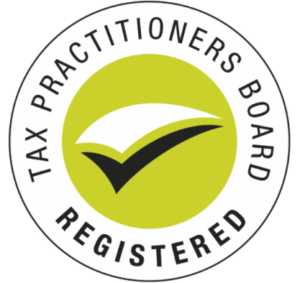FAQ
Superannuation FAQs
Superannuation is a savings vehicle designed to help you save for retirement. Superannuation funds that comply with Australian law receive generous tax concessions which provide an incentive for you to save for your own retirement. Your account balance generally consists of contributions from your employer, your own personal contributions, and earnings from investments.
Most superannuation funds allot your investments based on local and international shares, property, and fixed interest, by default.
You can withdraw your super:
- when you turn 65
- when you reach preservation age and retire, or
- under the transition to retirement rules, while continuing to work.
All contributions to superannuation are preserved until you meet a condition of release. There are very limited circumstances where you can access your super early. These circumstances are mainly related to specific medical conditions and severe financial hardship.
You can refer to the Australian Taxation Office website for further details or speak to a financial adviser for more information.
Tax on your super benefits is generally taxed at your marginal tax rate, however this varies depending on several factors, including your preservation age and the age you will be when you get the payment, whether the money in your super account is taxable or tax-free, whether you will get the payment as an income stream or lump sum and the type of income stream.
These factors determine whether you:
- pay tax on the withdrawal (for example, whether it is taxable income)
- get tax offsets that reduce the amount of tax that you pay.
Generally, your super benefits will include both a tax-free and a taxable component.
You can refer to the Australian Taxation Office website for further details or speak to a financial adviser for more information.
You can withdraw your super:
• when you turn 65
• when you reach preservation age and retire, or
• under the transition to retirement rules, while continuing to work.
Your preservation age depends on when you were born. You can use this table to work out your preservation age.
Preservation age based on date of birth
| Date of birth | Preservation age |
| Before 1 July 1960 | 55 |
| 1 July 1960 to 30 June 1961 | 56 |
| 1 July 1961 to 30 June 1962 | 57 |
| 1 July 1962 to 30 June 1963 | 58 |
| 1 July 1963 to 30 June 1964 | 59 |
| 1 July 1964 or later | 60 |
The amount of super you will need when you retire depends on your expected costs in retirement, and the lifestyle you want.
Most people can now expect to live well into their eighties. This means that if you stop working at 65, you’ll need retirement income for 20 years or more.
The Association of Superannuation Funds of Australia (ASFA) provides an industry retirement standard. This estimates how much money you’ll need, depending on your lifestyle.
| ASFA Retirement Standard | Annual living costs | Weekly living costs |
| Couple — comfortable | $62,269 | $1,193 |
| Single — comfortable | $44,146 | $846 |
| Couple — modest | $40,560 | $777 |
| Single — modest | $28,165 | $540 |
Source: ASFA Retirement Standard, December quarter 2019
You can make contributions into your super fund and your employer is eligible to make contributions.
Eligibility to contribute to superannuation is based on your age. Anyone under age 65 is automatically eligible to contribute to their superannuation. Once you reach age 75, contributions generally cannot be made unless the contributions are mandated employer contributions required under an agreement or award.
| Age | Requirement |
| Under age 65 | No restrictions. |
| Age 65 – 74. | You must have been gainfully employed for at least 40 hours within any 30 consecutive day period during the current financial year or the contributions are mandated employer contributions. |
| Age 75 or over | Only mandated employer contributions can be made. |
Workers’ compensation payments are split into two payment types:
- Workers’ compensation: returned to work
- Workers’ compensation: not working
Workers’ compensation payments made to an employee for hours worked are considered ordinary time earnings (OTE). As super guarantee (SG) at 9.5% is payable on ordinary time earnings (OTE), super guarantee (SG) at 9.5% will be required on those payments.
Workers’ compensation payments made to an employee for hours where they are not working are not considered ordinary time earnings (OTE). In turn, these payments don’t require super guarantee (SG) at 9.5% to be paid.
We recommend that you check your applicable award, agreement and/or contract to ensure that there are no additional super requirements.
As super guarantee (SG) is payable on ordinary time earnings (OTE), super guarantee (SG) at 9.5% will be required on those payments.
Ordinary time earnings is generally what you earn for your ordinary hours of work, including:
- over-award payments
- commissions
- shift loading
- annual leave loading
- allowances
- bonuses
For more information about the superannuation guarantee, including what counts as ordinary time earnings, visit the ATO website.
We're here to help
© Lost Super Finder 2023


Quick Links
Factual Information Only Disclaimer
This website contains factual information only and does not consider your personal circumstances, needs, objectives or financial situation. This factual information is not intended to imply any recommendation or opinion about a financial product. This information does not constitute financial advice or taxation advice, and the general nature of the content might not be applicable to you or your situation. Before acting on any information, you should seek professional advice and verify our interpretation/s before relying on the content or calculators within this website, while also considering its appropriateness in relation to your personal situation.
